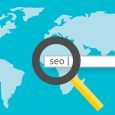 So you finally did it – after months of SEO dedication, questing for the ultimate web hosting provider and learning how to decorate your website in a presentable fashion, you finally have a decent presence on the Internet. After that much hard work, it is only human for you to sit back and relax as you watch traffic flow into the web pages that you have so lovingly tended to.
So you finally did it – after months of SEO dedication, questing for the ultimate web hosting provider and learning how to decorate your website in a presentable fashion, you finally have a decent presence on the Internet. After that much hard work, it is only human for you to sit back and relax as you watch traffic flow into the web pages that you have so lovingly tended to.
The truth is that your web ranking could be enough to sustain your site for awhile. But then again, if you are reading this right now, it is highly likely that you are looking for another way of increasing the number of visits to your website. Even Google Search Rankings Considers Site Speed.
If you’re looking for a healthy ranking spot on Google, you really should read on as they have recently decided that they would alter their ranking algorithm to take into account the loading speed of published websites.
The good news is that you don’t have to go all kamikaze on your website by annihilating all graphics and scripts from its pages. Though there are several ways to better your blog’s loading speed, here are 5 simple and easy steps you can implement to increase the loading rate of your website without deleting any of your precious content.
#1 – Resize Your Images
First of all, we get it that digital cameras can take really great shots of everything and that the point of Photoshop is to make awesome pictures look breathtaking in high resolution. Second of all, we also understand that it is much easier to get WordPress to do the dirty work for us by auto-shrinking an image so that it fits in the frame of the webpage.
What you do not realize though is that having WordPress auto-resize your pictures will take up one to two minutes of your page loading time. The solution is simply to resize your images before you add them to your webpage. You don’t even have to buy a software specifically to resize your images either as you can easily find those online for free. Meanwhile, you can also host your images in subdomain.
You Can Also Check :
- 20+ Tools To Optimize Images For Search Engines
- 15+ Tips To Optimize Images For Search Engines
#2 – Scripts Belong at the Bottom
When a browser is loading the script embedded in your page, it doesn’t do anything else besides processing your script. This is why some pages turn up blank for a while as the scripts are first being processed before the rest of the page loads. To counter this, simply shift your scripts to the footer of your page. Again, you don’t have to pull out money for this feat as plugins such as the JavaScript to Footer can be found for free on the Internet.
#3 – Limit Plugins
Speaking of plugins, there are literally thousands of plugins available for free on the Internet, each seemingly capable of adding entertainment and functionality to your webpage. From statistics to widgets, the most important thing is to not liberally add plugins to your web pages.
The more plugins you have, the more calls are required, meaning that it takes more time for your pages to load. Tips, reduce unneeded and unnecessary plugins to speed up your website. So it is better to use recommended plugins alone.
#4 – Host on a CDN (Content Delivery Network)
Pages load slow if your website is kept in a server half way across the globe from wherever your visitor is currently located at. To counter this problem, bloggers can choose to store their websites on servers strategically placed around the globe.
This way, a visitor will gain faster access by loading the pages from the server that is closest to him or her. You will have to shell out some money for this service, but a decent CDN provider such as the Amazon S3 is actually pretty affordable. You can also use Dropbox as CDN.
#5 – Optimize with YSlow and Firebug
YSlow is a Firefox add-on that analyzes web pages and assists you by suggesting ways in which you can improve the performance of the analyzed page. Similarly, Firebug is also a Firefox add-on that enables users to edit, debug and monitor scripts displayed in the Firefox browser. Use these two great tools to analyze your web pages and optimize them accordingly.
At the End of the Day
The reason why people yearn for websites that load fast is the same reason why people want fast food and generic pop songs. It is intuitive and is simply compulsory to have a page that loads fast from a commercial point of view. Think about it, would you spend more than a few seconds waiting for a page to load? What is the point of getting visitors to your site if they don’t have the time to read your content, right?
The bottom-line is that regardless of whether you’re just looking to improve or maintain the traffic flow to your web site, you need to constantly tweak your page so that it loads at its fastest. Luckily, these five steps to shortening the load up time of your website is not only easily implemented, but is also mostly free of charge.










I think the main causes of a slow sites are too many useless plugins, bad hosting, no cache plugin, and too many pictures/videos on the page. All can be fixed easily. And it should be done immediately considering speed contributes as how the search engines will rank our sites. I say make the improvements as soon as possible.
thanks for sharing this
First instead of resizing i would have cropped my images. Second one is really cool. i never knew that we have to keep the script at bottom. will do it now. and even third is a good tip. yes i will limit them. Thanks for the post.
I think we should also use less ads on our website. Something they slows down the loading time.
Yes, as they take loading time and can slow down the speed of our website 🙂
You are right. Putting too many ads can certainly slow down a blog or website. It is better to place the ads strategically than putting too many of them!
Good post, a site which loads slowly may be negatively affecting conversion rates. If site loads faster your visitors will thank you and Google will compensate you.
Hosting photos on external sites is useful. As it puts lot of pressure on our main hosting, this eventually takes time to load up.
This is some very useful tips, will keep them in mind and will surely implement them for the betterment of the blog.
Nice Tips Jasmine…using CDN also makes a lot difference to the website speed..for WordPress its better to use WP-Cache plugin to speed up the site…
Reducing the number of images and scripts will decrease the loading time and at provide more happy readers.
Thanks
use a trailing slash at the end of the URL
minimize all JS
Nice post 🙂
Use a trailing slash at the end of the url? Will this speed things up?
optimizing the scripts are main thing
Wow, your number 3 was a big shock to me. I didn't even know that plugins can slow down your site's page load time. I am going to delete some of my site's plugins right now because I know I have some installed that I'm not even using.
Thanks a lot for sharing these tips Jasmine. I am planning on implementing all 5 steps on my own websites.
Informative. Thanks
Check out CloudFlare. It does a tremendous job! I’m not exaggerating! It saved me half of the page requests and for free.
Will check CloudFlare out, thanks for your valuable comment.
I would also spit large images into several smaller pieces to improve speed load, it is an old technique bit still works quite well for people who are on a slower connection.
Yeah, thanks for remind me this. I have always been doing this, but have kind of forgotten to mention it in the post. 🙂
Nice share Jasmine… I always use external image hosting to reduce the pressure on the main host…
Same here. I use picasa to host all my image 🙂
I have not really used Picasa, but I do see a few bloggers using it. Is Picasa good? Does it put watermarks or limit you on image size or something like that?
Some people use Flickr or tinypic for hosting images. Picasa is also good, blogspot blogs have some relationship with them I guess.
Thanks for the tips. Some of them are new for me. As additional, we also can use the cache plugin to speed up our site.
Use Wp-Cache Plugin.
I use hyper cache and it is good…
WP Super Cache and Hyper Cache are two great plugins. Either one should serve the purpose well!
use cache plugin (wp-supaer cache or W3 Total cache plugin) + good hosting company + use plugin smush.it to resize the images + minimise the use of CSS or javacsrpit
Really informative tips, Jasmine…
Some plugins like WP cache and Smushit really help in optimizing page load time…
Reducing and trimming your code also works to reduce page load. Also using an external css file helps.
Nice Tips. Optimizing images helps improve the speed of a blog a lot
Installing Wp-super cache in the wordpress blog helps improve the Blog speed so Bloggers should use wp-super-cache plugin for improving the speed of their wordpress blog